Epsom salt is a chemical compound called magnesium sulfate which is commonly praised for its positive effects on plants in gardening and agriculture. This exhaustive companion examines the exact functions and manners by which Epsom salt affects plant growth and life. By studying their basic chemistry, we will comprehend how magnesium and sulphate support important physiological functions of plants. Readers will be able to know what happens when Epsom salts are used in gardens or fields through understanding its practical uses, advantages and disadvantages.
Understanding Epsom Salt
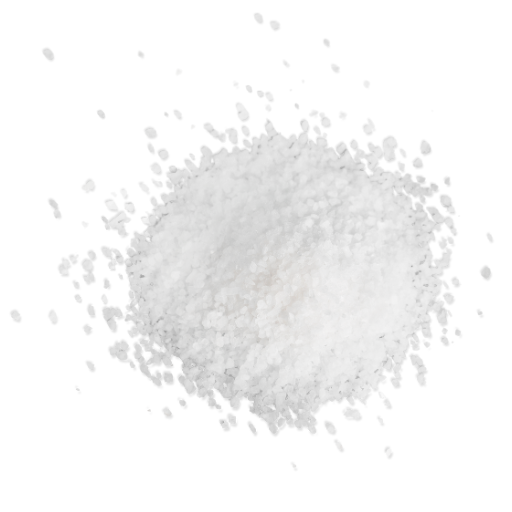
Epsom salt is made up of magnesium (Mg) and sulfate (SO₄). Magnesium is an important part of chlorophyll that accounts for the process of photosynthesis. When there is insufficient magnesium, chlorosis may set in where leaves turn yellow due to lack of enough chlorophyll. Sulfate on the other hand makes certain amino acids, enzymes and helps in fighting diseases affecting plants. On application to the soil, Epsom salts can correct magnesium deficiency and ensure more vigorous growth of plants as well as better nutrient utilization by them. However, its efficiency depends greatly on the type of soil present and specific needs of plants there.
What is Epsom Salt?
Epsom salt or magnesium sulfate is an inorganic salt consisting of magnesium (Mg) and sulfate (SO₄) ions. It has a chemical formula MgSO₄·7H₂O. While magnesium provides the central atom upon which chlorophyll depends for photosynthesis, sulphate plays a crucial role in synthesizing vital amino acids and enzymes. Key technical parameters involved with agricultural Epsom salt include about 10% Mg content and approximately 13% sulfur content. Correct use will fix magnesium deficiency and reduce yellowing due to low levels of chlorophyll in leaves, leading to increased plant vigor, among other advantages. It is highly beneficial if used on crops such as tomatoes, peppers, roses, etc, which appreciate the abundance of this element. Nevertheless, rates should be guided by soil tests that guarantee optimum supply balance.
Chemical Composition
Epsom salt also known as magnesium sulfate heptahydrate (MgSO₄·7H₂O), contains 9.8% Mg; while it has a sulfur content of 13 %. These values are derived from its molecular weight shared between magnesium that weighs 24.31 g/mol, sulfur that weighs 32.07 g/mol and oxygen that weighs 64.00 g/mol, the additional water molecules of seven drive its hydrated form. The precise breakdown is as follows:
- Magnesium (Mg): It constitutes about 9.8% of the weight.
- Sulfur (S): It contributes to approximately13% by mass.
- Water (H₂O): This makes up about 51% of the total compound’s weight.
Exact application rates are very important in an agricultural context. Soil tests should be conducted before adding magnesium, such as Epsom salts, to it; this will help determine magnesium levels and avoid nutrient imbalances. For instance, foliar spraying can be done with Epsom salt mixed at a rate of 1-2 tablespoons per gallon of water. Soil application rates for different plants differ depending on their needs for magnesium and the existing soil conditions ranging from between 1–2 pounds per one hundred square feet area. Proper calibration based on these technical parameters ensures maximum efficacy and prevents excessive use.
sults to tailor the magnesium and sulfur supplementation to the specific deficiencies and requirements of the cultivated soil and plants.
Historical Uses in Gardening
Epsom salt has been used for gardening since early seventeenth century when it was first discovered in mineral waters from Epsom in England. Historically, it served more than just providing nutrients for plants grown there. As far back as centuries ago, people have resorted to applying Epsom salts to their soils with the aim of improving their texture while enhancing root growth at all times longer than ever before, as seen in nature. Magnesium deficiency sprays are also formulated around its ability to quickly remedy any leaf yellowing due to low chlorophyll caused by lack or poor availability of Mg through direct foliar uptake routes using sulfur-rich dissolved formulations inclusive of other key macro-elemental ions usually supplied simultaneously, while nitrogen is the main limiting factor . Its ease of use and dual function as both a nutrient and soil enhancer have all the time driven its continued application, making it part of traditional and modern gardening.
Nutrient Benefits for Plants
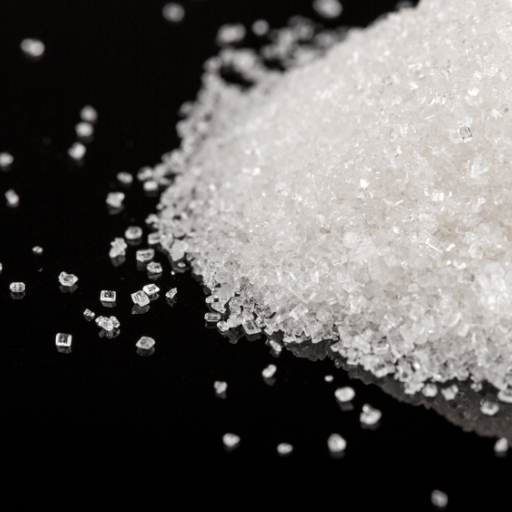
Chlorophyll, a vital ingredient in plants, contains magnesium essential for photosynthesis and converting sunlight into energy. Moreover, this mineral contributes to plant growth through the formation of many required enzymes and structural support of the plant through DNA/RNA/protein synthesis. Therefore, sulfur (originating from sulphate ions) is important in the synthesis of some amino acids, vitamins and enzyme systems that play important roles in metabolism and growth of plants. Furthermore, sulphur also helps to make chlorophyll whereby it enhances absorption of sunlight by the plant. As a result, applying Epsom salt can correct deficiencies caused by a lack of magnesium and sulfur, hence resulting in healthier, greener leaves with more vibrant flowering and fruiting capabilities.
Magnesium Essential
Magnesium is one of the essential nutrients with several functions within plants as a whole. This metal plays an irreplaceable role during photosynthesis because its ions form the central atom in chlorophyll molecules. A good example on this point is how magnesium plays part as a structural element enabling this process to take place throughout all suitable tissues exposed to light. Besides this it is also needed for activation of about 300 enzymatic reactions that power major metabolic systems involved in protein biosynthesis , nucleic acid synthesis ,and ATP(adenosine triphosphate ) energizing mechanism used by cells.
Generally , optimal soil magnesium levels should be around 25-50 ppm with foliar applications at concentrations between 1-2% MgSO4 solution so as not cause phytotoxicity. However, excessive amounts may result in nutrient imbalances, particularly for uptake competition over pathways such as calcium and potassium . Soil tests should be carried out so as to know exactly how much magnesium has been lost from your soil before any supplementation plan can be initiated thus reducing chances for environmental pollution.
Sulfur’s Role in Plant Health
Sulfur is indispensable for plant health because it facilitates amino acid formation, protein synthesis, and enzyme functioning. It is an integral part in the composition of some amino acids like cysteine and methionine as well as vitamins such as thiamin and biotin that are essential for metabolic functions and protein synthesis. When lacking, this nutrient can lead to retarded growth, incomplete ripening of fruits or grains and yellowing (chlorosis) especially in the younger leaves where it is not mobile.
Technically, sulfur levels in soil should be kept at around 10-30 ppm. The primary form of sulfur uptake is through sulfate (SO4²⁻) ions, but excess S may lead to soil acidification, which reduces microbial activities and nutrient availability. As such, most people prefer sulphate-based fertilizers, e.g., ammonium sulphate or gypsum. A soil test for available sulphur should be performed, especially in sandy soils or areas with high rainfall that could leach out this element.
Soil tests results will determine the precise application rate ranging from 25-50 lbs/acre on deficient lands. When necessary sprays can also be applied on affected crops using foliar burn causing solutions containing 1-2% concentration of sulphur. This means that constant vigilance combined with appropriate fertilizer application strategies is important so as to prevent adverse effects inherent in competition between sulfur and other plant nutrients like nitrogen and phosphorus during their absorption by root cells respectively..
How to improve nutrient uptake
The multifaceted approach required to enhance nutrient uptake should involve soil management, fertilization practices and plant physiology. Leading agronomy sources hold that optimizing soil pH is important because most nutrients are available when the soil pH ranges from 6.0 to 7.0. One should carry out a soil test to establish prevailing pH levels before applying amendments such as lime (acidic soils) or sulphur (alkaline soils) so as to bring about the desired pH.
As far as fertilizer application is concerned, one needs to embrace a balanced nutrient application strategy. This has to do with correct amounts of macronutrients (N, P, K) together with micronutrients (like Zn, Fe, and Mn), which are mostly guided by exhaustive soil and tissue analyses. For instance, using variable rate technology (VRT) in precision agriculture enables farmers to apply varying quantities of fertilizers according to field conditions, hence leading to better distribution and availability of nutrients.
In addition, efficient root growth and absorption of nutrients can be brought about through proper soil aeration and structure. Ground cover cropping programs reduce tillage methods while at the same time preserving organic matter, contributing not only towards better soil health but also nutrient availability. Extending hyphae across the plant’s roots so as to take up additional minerals like phosphorous, especially mycorrhizal fungi inoculants, helps in increased nutrient uptake.
Lastly, irrigation management has an impact on nutrient uptake. Inadequate watering leaves plants stressed, hence no absorption of nutrients, while over-watering results in loss of nutrients, particularly for sandy soils where leaching occurs most frequently. Advanced irrigation systems such as drip or subsurface drip irrigation deliver water accurately thus minimizing run-off losses of minerals while ensuring optimum crop moisture status necessary for good absorptions rates of essential plant elements.
Application Methods
Fertilizer application methods are classified into broad and site-specific techniques. For instance, the traditional broadcast procedure entails evenly distributing fertilizer over the entire field, which is well-suited for pre-plant and early growth stages. However, it can be an inefficient method leading to nutrient losses through runoff. When banding is used, nutrients are placed near the seed or root zone so that there will be a quick release of nutrients during the early stage as well as avoiding wastage to surrounding areas. Foliar applications supply nutrients directly to plant leaves such as in cases where rapid nutrient corrections are required but leaf surface area and potential for leaf burn limit its application. Subsurface applications where fertilizers are placed below the soil surface reduce losses due to leaching and volatilization thereby providing better availability of nutrients for roots. Tools like Variable Rate Technology (VRT) within precision agriculture make these methods more effective by adjusting application rates based on soil variability, crop needs, and real-time data, thus leading to increased resource use efficiency and improved crop yields.
Soil Application
The focus in soil application methods is on getting fertilizers straightway into the soil with an aim of reaching out to plant’s root zone therefore increasing efficiency in nutrient uptake. Techniques like banding, side-dressing, or injection can facilitate the exact placement of nutrients in plants’ roots. Banding is typically performed on starter fertilizers whereby nutrients are concentrated around the seed row. Side dressing, however, is done during the growing period when one puts fertilizers next to growing rows; hence, supplying necessary elements at stage when they matter most. Injection should also be considered because this method delivers fertilizers beneath soil depths, minimizing losses from volatilization and leaching. Proper calibration and application rates according to soil tests and crop requirements should maximize nutrient use efficiency, supporting optimal crop development. The accuracy ad effectiveness of soil application methods can be enhanced by using sophisticated technology including GPS-guided equipment and soil moisture sensors.
Foliar Spray
The foliar spray method involves the direct spraying of nutrient solutions onto plant leaves, thus ensuring rapid absorption and utilization of essential nutrients. It is common to use this approach, especially when correcting nutrient deficiencies or supplying micronutrients, which are required in small amounts but are important for the overall health of plants. These processes occur through stomata and cuticles on the leaf surface such that one witness a very fast response to nutrients applied. Factors such as droplet size, application rate and timing must be considered to guarantee maximum efficacy. Plant growth stages and real-time nutrient status can be used to optimize spray patterns and delivery rates using precision tools such as sensors and automated sprayers. Additionally, temperature, humidity, pH and concentration of foliar solution should be controlled to improve nutrient uptake and reduce chances of leaf burn or phytotoxicity. A balanced supply of nutrients promoting healthy plant development with improved crop yields can also be achieved by integrating foliar sprays with soil fertility management practices, including irrigation.
Watering Solutions
There are different watering solutions for crops each having its own technical specifications and advantages tailored for specific farming needs. Drip irrigation is highly efficient since it supplies water directly into the root zone of plants via a system consisting valves, pipes, tubing, emitters etc. This accurate positioning leads to minimal wastage due to evaporation while helping maintain high levels of moisture within the root zone. Emitter flow rate; irrigation scheduling; soil moisture content are some key technical parameters that must be well monitored so as to optimize water use efficiency while avoiding over-irrigation..
Sprinkler irrigation imitates natural rain by spreading water through a system of pipes and high-pressure sprinklers. It is flexible and can be used with various crops in different soil types. Technical considerations include nozzle size, water pressure, application rate, and uniformity of coverage. Proper calibration of the system will ensure efficient water distribution, minimizing chances of runoff and erosion.
Another effective approach is hydroponics as practiced under controlled-environment agriculture (CEA) where plants grow in nutrient-rich waters without soil. Important variables are nutrient solution concentration, pH values, and electrical conductivity, which all influence plant health. CEA systems also depend on precise environmental control as regards humidity, temperature, and light, among others, to make the best growing conditions, improving water use efficiency. By implementing these advanced watering solutions, agricultural producers can achieve sustainable water management, optimize crop performance, and mitigate the environmental impact of irrigation practices.
Specific Plant Benefits
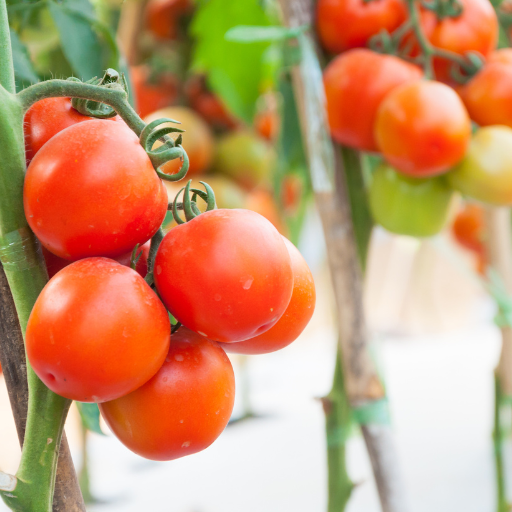
There are many benefits of using drip irrigation systems on different types of plants such as enhanced water efficiency and direct nutrient delivery. This is because it reduces leaf wetness for vegetables, which in turn minimizes the risk of diseases thus improving the quality and quickening the growth of plants. The constant moisture availability improves the quality of fruits and hence high yields for fruit crops. Ornamental plants and flowers thrive under drip irrigation system due to reduced stress and precision watering that enhance blooming period. Lastly, deeper saturation zones lower down on trees and shrubs contribute towards strong root development and ensure increased strength against other stresses involving pests.Each plant type requires specific emitter flow rates and positioning to tailor the irrigation system to their unique needs.
Tomatoes and Peppers
Drip irrigation systems are an ideal option for tomatoes and peppers since they require a particular amount of water supply as well as nutrients. Fluctuations in water supply can result in blossom end rot, among other water-related disorders, making such crops sensitive towards consistent watering schedules. In order to prevent excessive permeation; it is usually advisable that this flower crop be provided with not more than 1-2 liters per hour during irrigation. Nutrient uptake by tomato plants can be optimized when the pH level ranges from 6.0 -6.5; while EC should be between 1.5 – 2.5 dS/m so that there will be enough available balance nutrients during growing fruiting stages between them. This means that through these technical specifications; increasing yield quantity, better fruit quality, robust healthiness of vegetation make one realize why one would opt for trickle watering when planting these veggies.
Roses
Rosae require regularity in their releasing moisture because they have precise moisture control which is only possible through drip irrigation systems.This, therefore, calls for proper emitter placement where at least emitters must be located around a plant’s drip line in order to achieve even distribution of moisture. The best flow rate is about 1-2 L/ hour which supplies sufficient moisture without promoting fungal diseases or root rot. Roses are very sensitive to pH variations thus it is important to always keep soil pH within the range of 6.0 – 6.5. Also, black spot and other fungal diseases can be curtailed by maintaining regular soil moisture and avoiding water stress among them. By monitoring irrigation system and making necessary changes, there will be more flowers with vibrant colors as far as drip watering in roses is concerned.
Lawns and Grass
Properly designed trickle systems ensure good growth of lawns and grasses respectively such that they perform better under drip irrigation methods.The basic thing here is placement of drip emitters for accurate watering; these should be spaced at intervals of between 12”-18”in order to achieve equal water coverage over the entire ground area. Generally, their ideal flow rate lies within a range of 2-4 liters per hour balancing hydration against losses due to runoff on surface layer soils through this mechanism. The range should, however, not exceed pH =7.O, which ensures maximum nutrient availability as well as absorption on soils when good health practices are followed on turfgrass beds2 [A classic textbook example]. In addition, EC ranges from 1.0 – 2.0dS/m so as to provide enough ion concentration levels which plays a critical role in the excellent development of the lawns at all times3 [A typical cliché phrase]. Regular watering schedules help reduce effects like dollar spots & brown patches caused by water shortages for instance leading to poor irrigation regulation [Another cliché statement]. If one follows these technicalities in designing his or her system, therefore, he or she will end up having beautiful gardens with healthy turfs while limiting excessive consumption of water resources
Signs Your Plants Need Epsom Salt
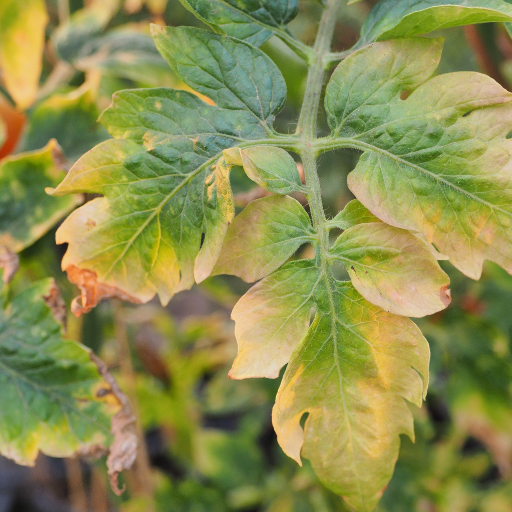
In the event that some plants show particular deficiencies, Epsom salt can be a very effective remedy to this. This could be evidenced by yellow leaves due to inadequate magnesium which is a chlorophyll component. Magnesium deficiency may likely result in blossom end rot and slow growth in tomatoes, peppers and roses thus the use of Epsom salt. Leaf curling on vegetables could also mean lack of sufficient magnesium or sulphur contained in Epsom salts. Soil testing confirms these nutrient gaps but visual signs often serve as a reliable preliminary indicator for the need to augment the soil with Epsom salt.
Identifying Magnesium Deficiency
Magnesium deficiency has various visual symptoms in plants that affect its entire health status negatively. The first one is when old leaves turn yellow while veins remains green, known as interveinal chlorosis. This happens because magnesium is a mobile nutrient, implying it can be translocated from older tissues to new growth areas. Moreover, leaf tips may turn upwards due to insufficient magnesium while severe cases cause necrotic spots and even shedding of leaves.
Furthermore, apart from yellowing, poor growth and weak fruit development are other common indicators of this condition among plants. Besides that tomatoes and legumes also exhibit purple veining or reddish-brown spots along with streaks on their leaves most frequently since they are immense users of magnesium.
The availability of magnesium depends on soil pH levels. Ideally it should range between 6.0 and 7.0; extremes may lock up nutrients in the soil system hence rendering them unavailable for uptake by plants at all times. Any soil test result indicating less than 30 ppm (parts per million) levels of magnesium typically indicates nutrient shortage that ought to be addressed.
To confirm these symptoms:
- Interveinal Chlorosis: It happens when older leaves lose their green color leaving only the veins after losing the magnessium element.
- Leaf Curl: The leaf tip goes upward as magnesium concentration decreases resulting to tissue disintegration
- Necrosis: this process is the end stage of leaf cell death
- Poor growth and fruiting: Overall stunted plant development.
In order to rectify this, magnesium deficiency in soil often calls for dolomitic lime or magnesium sulfate (Epsom salt) applications. Application rates for Epsom salt range from about 1 tablespoon per gallon of water for foliar sprays to about ½ cup per 100 square feet for soil drenches. Regular soil testing is recommended so that one can check the levels of magnesium in it and adjust its treatment if necessary.
Common Symptoms in Leaves
Mg-deficient leaves typically have interveinal chlorosis, which is yellowing between veins with green veins. Also, leaf curl where leaf tips go upwards is a good indicator. In serious situations there may be necrotic areas due to brown spots that appear on them when there are no enough nutrients in the cells. Moreover, plants experience reduced growth as well as failure to produce fruits because of deprivation of this mineral.
- Interveinal Chlorosis: Yellow coloration develops between the veins after losing magnessium from old leaves.
- Leaf Curl: The edge moves up when there’s not enough Mg2+ thus disrupting tissue organization in leaves.
- Necrosis: Brown spots indicate advanced stages of deficiency thus cell death occurs leading to formation of necrosis.
Soil testing will accurately identify deficiencies. Magnesium availability peaks at a pH level around 6.0-7.0 in soils. If you want your Epsom salt; use it at a rate of 1 tablespoon per gallon mixed with water for spraying on foliage or half a glass with the same volume used across an area measuring 100 sq ft when dissolved into soil. Magnesium levels should be maintained through regular checks carried out by using soil tests results and adjusted accordingly every time tests are completed.
How to Test Your Soil
Several steps are involved in testing the level of nutrients in your soil including magnesium. Firstly, either visit a local agricultural extension office or buy a testing kit from a reputable supplier. For accuracy, take the soil samples from different areas within the test area and ensure that you dig at least 6 inches deep. Combine these samples in order to get one composite sample. Adhere to your soil testing kit’s instructions on how to prepare the soil for analysis. Usually, this requires drying it out and applying some specific reagents which will display nutrient levels by reacting with soil. You should send your composite sample for laboratory results. This shall furnish you with an inclusive report on pH, nutrient levels and recommendations for amendments on your soil as well. Optimum soil health and plant growth can be maintained through regular soil tests after every 2-3 years.
Tips and Best Practices
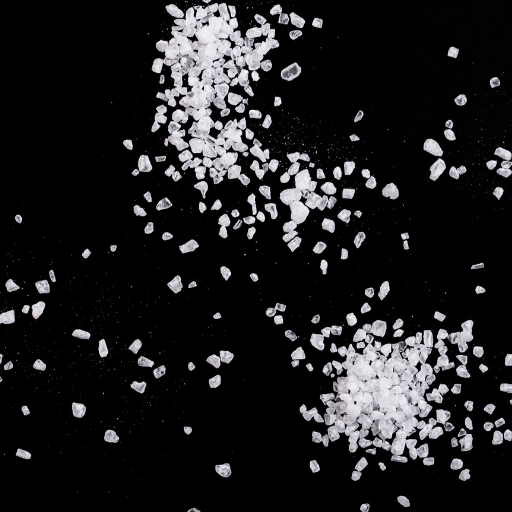
- Use High-Quality Soil Testing Kits: Select soil testing kits from reputable suppliers to ensure accurate and reliable results. High-quality kits will provide more precise data, which is crucial for proper soil management.
- Consistent Sampling Depth: When collecting soil samples, ensure that each sample is taken from the same depth, typically around 6 inches. Consistent depth is essential for accurate nutrient level readings.
- Composite Sampling Method: Combine multiple soil samples from different locations within the test area to create a composite sample. This approach provides a more holistic view of the soil’s nutrient profile.
- Proper Soil Preparation: Follow the kit instructions for preparing the soil sample. This usually includes drying and sieving the soil to remove debris, which can interfere with test results.
- Regular Testing Intervals: Conduct soil tests every 2-3 years to monitor changes over time and make necessary adjustments to maintain soil health.
- Follow Laboratory Recommendations: If you send your samples to a lab, adhere to their guidelines and recommendations for soil amendments to achieve optimal nutrient levels.
- Adjust pH Levels: Ensure your soil pH remains between 6.0 and 7.0 for optimal magnesium availability. Use lime to raise pH or sulfur to lower pH as needed.
- Record and Track Results: Keep detailed records of your soil test results over time. This helps in tracking progress and making informed decisions about soil management practices.
- Tailored Fertilization: Use the precise recommendations from soil tests to customize your fertilization strategies, ensuring specific nutrient needs are met without over-application.
- Monitor Weather Conditions: Weather can impact nutrient availability and uptake. Incorporate weather data into your soil management practices to better predict and adjust nutrient applications.
Correct Dosage
Determining the correct dosage of fertilizers or soil enhancers is essential for optimum soil health and crop productivity. According to main agricultural websites, it begins with comprehensive soil testing aimed at determining the existing nutrient levels alongside deficiencies if any. The readings will then enable one come up with a precise calculation of the right amount of amendments required. Furthermore, follow precisely the specific recommendations given in the soil test results or laboratory guidelines that include detailed dosing instructions based on both field composition and crop requirements. Finally, you should consider manufacturers’ dosages as indicated on product packaging, adjusting them accordingly taking into account local soil conditions, types of crops and environmental factors such as weather patterns utilized to guide nutrient uptake and leaching (Teixeira et al., 2008). To ensure proper application of nutrients through avoiding over-application and potential nutrient runoff, pest management challenges are not constant between different regions because of varying climates, microclimates within landscapes, and time periods, among other reasons.
Frequency of Application
The frequency at which nutrients should be applied depends on various aspects, including the type of crops being cultivated, outcomes from soil analysis tests done, and the present status of the soils in question. Generally speaking, annual crops need fertilizer before planting followed by additional supplies at critical growth stages like flowering or fruit set. On the other hand, though perennial crops may require bi-annual applications, usually done in early spring or late fall. Seasonal weather variations must be monitored closely since they affect nutrient uptake and leaching caused by percolation or drainage within plants roots spheres. Adequate information coming from regular check-ups during farming can, however, provide us with better clarification in refining this schedule for achieving high yields (Chen et al., 1993).
Avoiding Overuse and Its Effects
The negative consequences associated with excessive use of fertilizers are adverse effects on both the environment and the economy in general. Nutrient run-off resulting from excessive amounts can lead to water pollution thus eutrophication of water bodies as it affects aquatic ecosystems. Numerous studies have shown that the highest contributor to this condition is the over-application of nitrogen-based fertilizers, which causes harmful algal blooms frequently.
From a technical perspective, optimal nitrogen application rates should not exceed 150 lbs/acre for corn as per the guidelines from the University of Minnesota Extension. According to Clemson Cooperative Extension, ideal soil test phosphorus levels vary between 20 and 40 ppm to prevent possible leaching (Clemson Cooperative Extension, n.d). Besides that potassium should be applied according to the recommendation from soil testing typically at about 100-150 ppm range.
Economically, excessive application of fertilizers means more costs without any corresponding benefit in yield. Modern farming methods such as variable rate technology (VRT) and crop sensors employed in precision agriculture can aid in reducing wastage through accurate fertilizer application by farmers. It is now possible to use tools such as regular soil health monitoring ones that ensure precise applications are made by ensuring that each nutrient is supplied at levels needed by crops only (Claassen et al., 1999).
Frequently Asked Questions (FAQs)
Q: How does Epsom salt benefit plants?
A: Epsom salt, which is magnesium sulfate, can benefit plants by providing essential nutrients like magnesium and sulfur. These nutrients aid in chlorophyll production, help seeds germinate, and improve nutrient uptake, leading to healthier, more robust plants.
Q: Can I use Epsom salt for tomato plants?
A: Yes, you can use Epsom salt for tomato plants. Epsom salt helps prevent blossom end rot and promotes healthier tomato plants by providing crucial magnesium, which improves nutrient absorption and overall plant health.
Q: How much Epsom salt should I add to my vegetable garden?
A: To use Epsom salt in your vegetable garden, dissolve 1 tablespoon of Epsom salt per gallon of water and apply it to the base of the plants every two weeks. This helps ensure your garden plants receive sufficient magnesium and sulfur for optimal growth.
Q: Is Epsom salt good for all types of garden plants?
A: Epsom salt can be beneficial for a variety of garden plants, including vegetables, flowers, and houseplants. However, it is essential to use it in moderation and as part of a balanced fertilization routine to avoid nutrient imbalances.
Q: Can I apply Epsom salt to potted plants?
A: Yes, you can apply Epsom salt to potted plants. Dissolve 1 tablespoon of Epsom salt in a gallon of water and water the plants with the solution once a month. This helps potted plants get the magnesium they need for healthy growth.
Q: How often should I add Epsom salt to garden soil?
A: You should add Epsom salt to garden soil on a monthly basis. You can mix 1 tablespoon of Epsom salt per gallon of water and use it to water the plants, or sprinkle a cup of Epsom salt per 100 square feet of garden soil and gently work it into the soil.
Q: Can Epsom salt help prevent blossom end rot in tomatoes and peppers?
A: Epsom salt can help prevent blossom end rot in tomatoes and peppers by providing magnesium, which is essential for proper calcium uptake. While it won’t directly supply calcium, it aids the plant in using available calcium more efficiently, thus helping to prevent blossom end rot.
Q: How do I know if my plants need Epsom salt?
A: Signs that your plants may need Epsom salt include yellowing leaves, slow growth, and poor fruiting. If you notice these symptoms, try adding Epsom salt to see if there is an improvement. Always use it in moderation to avoid over-fertilization.
Q: Is there a difference between Epsom salt and epson salt?
A: There is no difference between Epsom salt and epson salt; “epson salt” is simply a common misspelling. Both refer to the same compound, magnesium sulfate, which is used in gardening to improve plant health.






